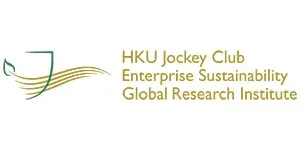
HKU Jockey Club Enterprise Sustainability Global Research Institute
World-Class Hub for Sustainability
HomeHong Kong Economic Policy Gree...2.3 Results
2. Case study: Future Climate Risks and Public Housing in Hong Kong
2.3 Results
We start by visualizing the projected typhoon intensity under different climate pathways in Figure 9. We project the extent of change in typhoon intensity relative to 2024 under various scenarios between the present and 2100. Under the high emissions scenario (SSP5-8.5), typhoon intensity is projected to increase significantly, more than 3.5 times relative to 2024. In contrast, in the low emissions scenario (SSP1-2.6), while typhoon intensity may rise slightly in the short term, after reaching a peak around 2050, the intensity is expected to decrease gradually.
Figure 9. Projected typhoon intensity under different combined SSP-RCP scenarios.

Notes: Projected changes in typhoon intensity relative to 2024 across various combined SSP-RCP scenarios from 2024 to 2100. The blue, yellow, green, and purple line segments represent the SSP1-2.6, SSP2- 4.5, SSP4-6.0, and SSP5-8.5 scenarios, respectively. The SSP5-8.5 scenario exhibits a significantly higher and more rapidly increasing typhoon intensity than other scenarios. Typhoon intensity continuously strengthens in all scenarios except for SSP1-2.6, which shows a slight decline after 2050. (Data source: YoujiVest Climate Lab)
Next, we summarize the expected economic losses under different climate pathways for the selected public housing units in Figure 10. Panel A demonstrates the results for Kwong Fuk Estate; Panel B is for Tin Heng Estate, and Panel C is for Yee Ming Estate. The value loss trends are consistent across the three public housing units under four combined SSP-RCP scenarios, with risks increasing over time. Significant value losses are anticipated even under the most optimistic (the low emissions pathway) scenario (SSP1-2.6). For example, a loss of HK $2,639.75 million for Tin Heng Estate would occur based on our projection. In more extreme cases, the potential loss in asset value would increase to HK $2915.45 million for Kwong Fuk Estate, HK $3,956.91 million for Tin Heng Estate, and HK $1288.15 million for Yee Ming Estate.
Figure 10. Projected value losses of the selected public housing units.
Panel A. Value loss of Kwong Fuk Estate under the SSP-RCP scenarios.

Panel B. Value loss of Tin Heng Estate under the SSP-RCP scenarios.

Panel C. Value loss of Yee Ming Estate under the SSP-RCP scenarios.

Notes: The figure presents the value losses for the selected public housing units under various climate scenarios. Panels A, B, and C illustrate the projected value loss changes for three selected public housing estates from the present until 2100 under four combined SSP-RCP scenarios. Different colors represent distinct climate scenarios, with purple indicating the high carbon emission scenario (SSP5-8.5). The upward trend suggests that value losses are increasing over time. (Data source: YoujiVest Climate Lab)
Figure 11 summarizes the asset value losses under the SSP5-8.5 scenario. We further distinguish the specific factors causing these losses. The results indicate that Tin Heng Estate would suffer the most severe losses, followed by Kwong Fuk Estate and Yee Ming Estate.
Importantly, our analysis shows that the potential damages caused by sea level rise can be more severe, especially in the long run. It is projected that the asset loss due to sea level rise for the three public housing estates by 2100 would reach around HK$4,500 million, significantly higher than that caused by typhoons. By 2050, the value loss due to flooding for all selected public housing could be tripled.
Figure 11. Projected value losses of public housing caused by typhoons and sea level rise under SSP5-8.5 scenario across time horizons.

Notes: Under the SSP5-8.5 scenario, the value losses faced by three selected public housing units due to typhoons and sea level rise across different time horizons (2030, 2050, 2080, and 2100) are summarized. The figure illustrates the primary risks these public housing units would face and the relative value losses for these risk types. (Data source: YoujiVest Climate Lab)